Feature / Special delivery
Moorfields
Specialist hospitals are not the first thing you think about when you picture the NHS’s efforts to combat Covid-19. But these organisations – from orthopaedic and eye hospitals to cancer centres and children’s units – have all been significantly impacted. They have faced many of the same pressures, made their contribution in whole system responses and will have an important part to play in the recovery of NHS services.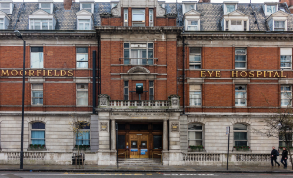
Moorfields Eye Hospital NHS Foundation Trust in London is a good example. The provider of specialist elective and emergency ophthalmic services saw more than 780,000 patients in 2019/20 across accident and emergency, day cases, inpatient elective and non-elective and outpatient settings. But in March 2020, as the pandemic struck the NHS, these numbers fell sharply.
‘We witnessed something that was unprecedented,’ says trust chief financial officer and deputy chief executive Jonathan Wilson. ‘We are largely an elective centre and we saw large decreases in activity from the second two weeks in March onwards. And in April the number of case presentations fell even further.’
It wasn’t just elective activity that was affected by the pandemic; non-elective work such as vitreoretinal tears also dropped.
A similar phenomenon has been reported by cardiac units. There is an argument that reduced interaction, activity and work by the public during lockdown may have reduced
the incidence of some events. But it is also likely that the government’s message of ‘stay at home’ was so effective that some genuine cases simply didn’t present.
Moorfields operates a hub and spoke model across London. As the pandemic struck, it temporarily closed some spokes, consolidating its work on fewer sites, and stopped its routine elective work except for P1 and P2 priority urgent and emergency patients.
The focus was very deliberately on sight-saving procedures. However, the overall fall in numbers in April was significant; elective surgery down by 97%, outpatients 82%, A&E 59% and non-elective 36% down.
The trust contributed to the overall NHS response to Covid-19 in three ways. In spring 2020, some staff volunteered to support a number of London trusts, including those hosting Moorfields hubs. In the second wave, a greater number of staff were redeployed, with more than 150 staff moving to support services across London. And the trust worked out what it could do to take pressure off other trusts in terms of ophthalmology services, taking on P1 and P2 activity or providing support to clinicians in other trusts.
But, perhaps of greatest significance, it also took time to think about the recovery that was going to be needed for ophthalmology services once the peak of Covid had passed.
The trust was able to start to recover services over the summer and autumn before the second wave again hit elective activity. And, while the trust has kept sight-saving work going through the year, and turned on virtual and phone appointments where possible, the impact on activity over the whole year is clear.
The trust’s figures up to January show that its total admissions over the year fell by 57% compared with the same 10 months in 2019/20. Referrals were down by 53% and total outpatient attendances also fell, by 59%. A&E arrivals were down 38%. This is all contributing to a significant backlog of work – both in terms of cases in the system and those where presentation has been delayed.
It is not certain how long it will take to recover the overall backlog and it will be different specialty by specialty. For example, Mr Wilson says that, immediately after the first lockdown, some non-surgical subspecialties were forecasting a potential two-year wait for treatment – although this has subsequently been improved significantly by actions taken during the year.
Dealing with this backlog is not a Moorfields-specific problem. A recent report from the Getting It Right First Time programme on cataract hubs and high-flow cataract lists, reports that pre-pandemic cataract surgery activity was nearly 450,000 cases per year and likely to increase over the coming years.
However, it says that NHS England estimates suggest that ophthalmic surgical activity dropped by at least 38% or 200,000 cases during the year.
The thinking time about recovery at Moorfields led to a number of specific responses. On the surgery side, a ‘cataract drive’ in September saw the trust quadruple the number of cataract operations in a week to more than 700 across eight theatres at the City Road site.
Diagnostic hubs
And it also developed diagnostic hubs, two of which are already open, with a third in planning. Each hub offers a number of diagnostic lanes containing a number of distinct imaging suites.
So, a patient moves through the lane having their pressures taken, an optical coherence tomography (OCT) scan and whatever else they need, without seeing another patient. The revised pathway reduces both the time each patient spends in clinic to just 45 minutes and the number of overall face-to-face interactions, making the patient journey more efficient.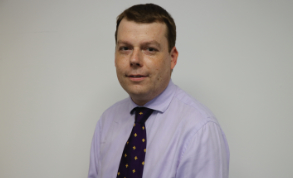
‘We are starting to come back to normal levels of activity in some services,’ says Mr Wilson (pictured). ‘But to get through the backlogs we’ll need to do more than 100%.’
This will be difficult given that more than half of Moorfields’ activity is undertaken in its Victorian City Road building, which was not designed with social distancing in mind.
Mr Wilson says that, while Moorfields has its own recovery challenges, these need to be seen as part of recovering ophthalmology services across the country – it is after all the NHS’s biggest outpatient specialty. Dealing with this general backlog will need to involve more than just typical waiting list initiatives
‘We’ve all been in organisations that have undertaken unsustainable recovery paths,’
says Mr Wilson, ‘simply throwing extra capacity at the issue.’
He acknowledges that ‘going faster’ will have to be part of the solution. ‘But we also need to resolve the underlying issues.
‘We are very aware that there is an option to look at treatments for patients coming through the door – for example, looking at the glaucoma first attendance variation between those who are discharged and those who stay in the system,’ he says.
‘Some organisations retain those patients while others opt for them to be handled in the community.’
Much of this transformation challenge and the need to explore variation existed before the pandemic. Mr Wilson believes that in some ways Covid-19 has heightened the urgency around this agenda and the trick will be in getting a sustainable match between capacity and demand.
The Royal National Orthopaedic Hospital
The Royal National Orthopaedic Hospital NHS Trust (RNOH) considers itself to be the largest specialist orthopaedic hospital in the UK and enjoys an international reputation for ground-breaking treatment.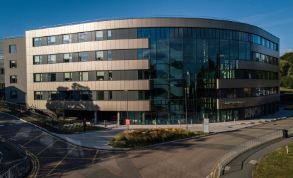
One in five of the UK’s orthopaedic surgeons has trained there – think bone tumours, spinal injuries, ankle reconstruction and complex peripheral nerve injuries. So its role in the wider response to a major respiratory disease is not so obvious.
However, the Greater London trust not only provided staff for the emergency London Nightingale hospital, but also set up a trauma service, relieving pressure on other trusts in the area and enabling them to focus on their considerable Covid demand.
During the second wave of the pandemic in the UK, the trust even became a general Covid hospital for a short period.
‘We shut down our elective work in March, apart from five “life or limb” pathways,’ remembers Caroline Owusu-Bennoah, the trust’s chief finance officer.
This created the capacity for the trust to reconfigure itself into an emergency trauma hospital – not a service it usually delivers – diverting road traffic accident and other patients away from more seriously affected neighbouring trusts.
‘We have a 16-bed critical care unit and the integrated care system [North Central London] recognised our capabilities and our surgeons were keen to help,’ says Ms Owusu-Bennoah, who moved from Lewisham and Greenwich NHS Trust to take on the RNOH role in March last year. ‘The staff just adapted to becoming a trauma hospital almost overnight.’
Over the ensuing months, the trust admitted nearly 400 patients with trauma injuries. At the same time, the outpatient model was transformed.
Prior to Covid, just 10% of the more than 11,000 consultations each month were being delivered virtually.
This was completely transformed, with 87% of all consultations moved online within the first six weeks, gaining high satisfaction scores in the process (90/100 for patients and 78/100 for clinicians).
While the trust wasn’t actively taking Covid-positive patients for direct treatment, it faced similar staffing pressures to other trusts, with staff absences due to illness or self-isolation.
However, it still managed to be a net contributor to the local mutual aid system – not only providing staff for the Nightingale hospital but also helping in other trusts’ intensive treatment units when possible.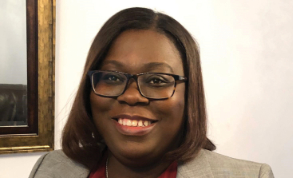
Ms Owusu-Bennoah (pictured) says that the trust was doing very little of its usual elective activity during the Covid peak period. There was a period of service recovery in the late summer and the run-up to Christmas. But this came to a halt with the second wave of the virus.
On this occasion, the trust got involved as a step-down facility for Covid patients from local hospitals to finish their recovery before being discharged.
At one point the trust had 68 Covid patients in the hospital – around 30% of the trust’s total bed capacity.
Waiting times
The stopping of elective services means a significant backlog has built up, with waiting times inevitably increasing. The trust’s referral to treatment performance for the year to February was 66% compared with the target of 92%, although cancer performance has remained strong during the pandemic as one of the trust’s protected pathways.
The pandemic has also put the trust’s financial recovery on hold. An £11m deficit in 2019/20 on income of £170m marked the fifth consecutive year of not breaking even. For 2019/20, income that was under plan and expenses that were over plan were compounded by a £5m shortfall in Provider Sustainability Fund income.
Ms Owusu-Bennoah says that the problems are long-standing and in part relate to underfunding of the trust’s specialist workload via the national tariff, despite the system of tariff top-ups for specialist providers.
But she acknowledges that the trust also needs to drive greater efficiency from its operations. Benchmarking with other orthopaedic trusts suggests there are gains to be made.
In addition, the national Getting It Right First Time programme – which started at and has been hosted by the trust – has also identified opportunities that the trust is working through.
Tariff impact
The tariff had a big influence on the trust’s income before the temporary finance regime was brought in. ‘Specialised commissioning was a block contract, but the basis of the block is activity times tariff and there are certain areas where the tariff doesn’t accurately capture the complexity of the work we do,’ Ms Owusu-Bennoah says.
‘For example, a revision knee is not like a normal knee replacement – it can take far longer – as would the outpatient attendance. So, the orthopaedic tariff doesn’t always cover the cost of the treatment provided and the extreme complexity is not captured by the specific healthcare resource group or the comorbidity/complexity splits.’
She adds that the trust has not yet assessed what a move to aligned payment and incentive contracts might mean for the trust.
The system envelopes issued for the second half of the year set the trust a target of around £800,000 deficit for the year, relying on the recovery of services and some funding through the elective incentive scheme.
Despite the second wave of the virus interrupting the recovery, Ms Owusu-Bennoah says that the trust managed to improve on its target, before an accrual for carried forward holiday is factored in.
As the NHS moves beyond the Covid pandemic and the current temporary financing arrangements, the trust recognises that it has some challenges ahead and decisions to take about the mix of work it undertakes.
‘There is room for improvement on efficiency,’ says Ms Owusu-Bennoah. ‘Doing more standard activity offers more scope for standardisation and, as time goes on, we will need to think about what kind of portfolio we carry out as a specialist hospital.
‘The specialist work will always continue, but what else can we do? For example, we have increasingly been talking about musculoskeletal support to the wider system.
‘We know the complexities [of this area], so why not support in a wider way by getting involved in MSK as a whole?’
That could mean an increase in non-surgical support and therapy services, and a real opportunity to take a lead role in this area across the whole system.
In general, Ms Owusu-Bennoah recognises that there are real benefits associated with moving to greater system working, but some threats as well – in particular how the move of specialist commissioning to integrated care systems will play out.
NHS England is currently the trust’s single biggest commissioner, providing 39% of its total income. Even a small proportion of this funding being spent elsewhere could provide significant challenges.
Golden Jubilee National Hospital
A significant part of the Golden Jubilee National Hospital’s role is to keep waiting times down across Scotland – a point underlined by the official name of the health board of which it is a part, the National Waiting Times Centre Board.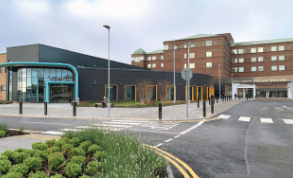
As such, it receives referrals from boards across Scotland and typically performs more than 25% of all hip and knee replacements and around 20% of all cataract operations.
It is also a major diagnostic specialist centre, provides all heart and lung surgery for the West of Scotland and manages three national heart and lung specialist services.
However, during the last year, the centre has been relied on even more to keep delivering the country’s elective activity, opening an additional cardiac catheterisation laboratory and a six-theatre state-of-the-art eye centre.
The hospital stopped its elective programme when the whole NHS was put on an emergency footing at the start of the pandemic, although it continued to treat urgent heart, lung and cancer patients. However, it resumed planned care at the beginning of July.
Since then it has undertaken nearly 80,000 procedures, including 2,555 orthopaedic procedures, 700 cancer procedures, 4,348 ophthalmology procedures, 6,617 heart and lung procedures and more than 62,000 diagnostic imaging procedures.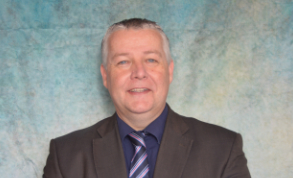
Director of finance Colin Neil (pictured), says that the Covid-19 pandemic had brought unprecedented challenges to the NHS in Scotland, as well as to healthcare services all around the globe.
‘During this time, however, as a Covid-light site following the initial phase of the pandemic, our team has developed new, flexible, and safe ways of working to continue to provide care for our patients,’ he says.
‘We have also worked in collaboration with healthcare colleagues across the country to introduce new specialities, including urgent cancer services for those who need them most.’
With the number of procedures undertaken almost doubling since January of this year, Mr Neil says the hospital is playing a crucial role in NHS Scotland’s recovery plan.
‘We have continued to do everything we can to support the NHS in Scotland as we navigate through the ongoing challenges of combatting coronavirus,’ he says.
Related content
We are excited to bring you a fun packed Eastern Branch Conference in 2025 over three days.
This event is for those that will benefit from an overview of costing in the NHS or those new to costing and will cover why we cost and the processes.